CINEMATIC NONFICTION 2012
[Editor’s note: Robert Greene is the director of Fake It So Real, Kati With An I, and Owning The Weather. We hope very much that he will continue to write pieces like these for us in 2013 and beyond!]
Ten years into this renaissance in documentary culture that began, arguably (in America), with the release and success of Spellbound in 2002 and continued through such milestones as the birth of boundary-pushing film festivals such as True/False and CPH:DOX, as well as the founding in 2008 of the first documentary-only awards ceremony, Cinema Eye Honors, nonfiction cinema is at a crossroads. Two worlds have emerged: on one side we have an explosion of films, filmmakers and micro-movements that are pushing nonfiction cinematic form, creating immersive, expressive, genre-bending films that bristle with ideas and energy. On the other side, we have a film critic culture, well-versed in fictional narrative art cinema, completely missing the boat.
I like to situate my own films as a part of this renaissance, so I’m obviously not an impartial voice when discussing what I see as a critical failing. But how else do you explain The New York Times’ Manohla Dargis, a gifted and beloved movie critic, writing the following sentences in her review of one of the year’s best films, Only The Young?
The movie is the feature directing debut of Jason Tippet and Elizabeth Mims, who were in their 20s when they started shooting. The two had recently graduated from the California Institute of the Arts, in Southern California, when a pair of teenagers, Garrison Saenz and Kevin Conway, skateboarded up to them and gave the budding filmmakers a subject. That meeting isn’t in the movie, which begins abruptly, with none of the usual documentary preliminary markers. [Emphasis mine]
What in the holy hell is that sentence doing in a review of a major film by a major film critic? Is Dargis implying the meeting of the filmmakers and the stars should have been in the movie? If she reviewed Sixteen Candles, would she have wanted to see script meetings between John Hughes and Molly Ringwald? Dargis is well-known as being a bit tone-deaf when it comes to documentaries, but that sentence was simply absurd, a frustrating part of a frustrating review that misunderstood the basic ideas at work in the film.
Later, in her year-end review, Dargis cited with due excitement the “aesthetic expansiveness of American movies” then went on to mention such formally uninventive films as Brooklyn Castle and Ai Wei Wei: Never Sorry as her favorite documentaries of the year. And of course Dargis—a critic I genuinely respect, mind you—is not the only one. It’s not hard to be disappointed by most film critics if you’re a fan of groundbreaking nonfiction.
What are they missing? Well, almost no one is talking seriously about the collapsing walls between fiction, nonfiction and art cinema. Nonfiction cinema would best be described as a way of seeing and less a rigid and prescriptive “genre.” The most interesting documentaries push narrative bounds, re-shoot situations (as opposed to the somewhat tired practice of reenactment), play with the idea of performance, etc. They break the rules. Most interesting fiction, to me, is rooted in the observational camera, staging the action with the soul of cinema verité. How do so-called fiction and nonfiction films speak to each other? How do the stories being told or the situations being captured change according to approach? No one is asking these questions.
Meanwhile, there is a clear bias against discussing documentaries as movies first. If a film like the great Ballroom Dancer was fiction, critics would be fawning over its canny mix of melodrama and restraint. If the characters in Only The Young weren’t real people, no one would be asking them to discuss politics.
So I’ve decided to take a shot myself and offer a sort of corrective.
In that spirit, here is my list of some of the best rule-breaking, genre-busting or otherwise important/brilliant/moving nonfiction of the year. You’ll notice I don’t particularly worry about release dates or a film’s eligibility and my definition of “nonfiction” would certainly be called “expansive.”
We need a revolution in documentary criticism. I am a filmmaker, not a critic. But let’s try to light a fire anyway.
THE TOP 25 CINEMATIC NONFICTION FILMS OF 2012
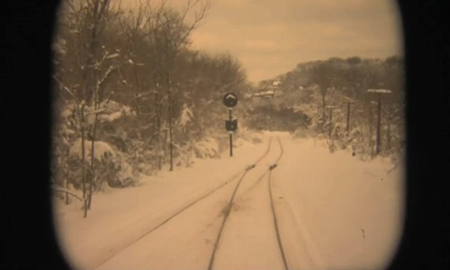 25. Traveling Light (Gina Telaroli) — A playful, experimental film journey on a train, loose and evocative, structurally open and in love with, well, light. You are taken in by the actively in-the-moment documentary camera before the beautiful hipsters start showing up. Then Telaroli’s film becomes something like a mystery without a plot or maybe a moving performance without drama. Either way, as a piece of nonfiction, it is a work of lovely impressionism.
25. Traveling Light (Gina Telaroli) — A playful, experimental film journey on a train, loose and evocative, structurally open and in love with, well, light. You are taken in by the actively in-the-moment documentary camera before the beautiful hipsters start showing up. Then Telaroli’s film becomes something like a mystery without a plot or maybe a moving performance without drama. Either way, as a piece of nonfiction, it is a work of lovely impressionism.
************************************************************************************************************************************************************************
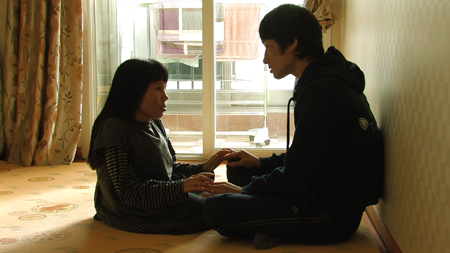 24. Planet of Snail (Yi Seung-jun) — So it turns out that watching a gangly, blind-deaf poet and his tiny, sweet, supportive wife make their way through the world in their necessarily particular way can pretty much confirm the existence of love in the universe.
24. Planet of Snail (Yi Seung-jun) — So it turns out that watching a gangly, blind-deaf poet and his tiny, sweet, supportive wife make their way through the world in their necessarily particular way can pretty much confirm the existence of love in the universe.
************************************************************************************************************************************************************************
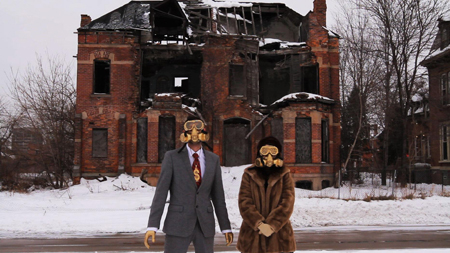 23. Detropia (Rachel Grady and Heidi Ewing) — Although I wouldn’t have minded someone with the Ross Brothers’ aesthetic delivering this much-needed symphony of that great, embattled American symbol of decline called Detroit, Ewing and Grady are quite capable themselves. Detropia does everything “right” and while sometimes it may feel a little too tried-and-true, the film remains full of distinctive cinematic flourishes that elevate the slightly predictable material. Meanwhile, the love of the place that the filmmakers clearly feel comes through vividly in every frame. Viva the Motor City!
23. Detropia (Rachel Grady and Heidi Ewing) — Although I wouldn’t have minded someone with the Ross Brothers’ aesthetic delivering this much-needed symphony of that great, embattled American symbol of decline called Detroit, Ewing and Grady are quite capable themselves. Detropia does everything “right” and while sometimes it may feel a little too tried-and-true, the film remains full of distinctive cinematic flourishes that elevate the slightly predictable material. Meanwhile, the love of the place that the filmmakers clearly feel comes through vividly in every frame. Viva the Motor City!
************************************************************************************************************************************************************************
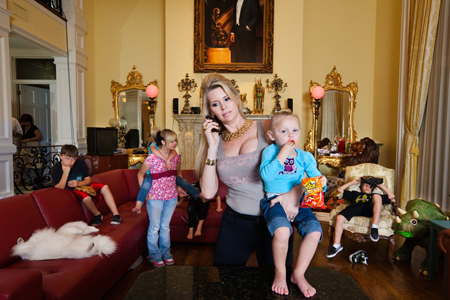 22. The Queen of Versailles (Lauren Greenfield) — When one of the film’s stars, David Siegel (the billionaire owner of Westgate Resorts), filed a lawsuit against director Lauren Greenfield, his lawyer claimed that “The Queen of Versailles is a fraud – more fictional than real… a staged theatrical production, albeit using nonprofessionals in the starring roles (as themselves).” Well if that doesn’t make you want to see it, how about this: you know how you watch a reality TV show and it’s kind of good but you really wish the hilarious, crazy, oh-my-god stuff you’re seeing could be in a real movie, handled by a real filmmaker? Well that’s The Queen of Versailles.
22. The Queen of Versailles (Lauren Greenfield) — When one of the film’s stars, David Siegel (the billionaire owner of Westgate Resorts), filed a lawsuit against director Lauren Greenfield, his lawyer claimed that “The Queen of Versailles is a fraud – more fictional than real… a staged theatrical production, albeit using nonprofessionals in the starring roles (as themselves).” Well if that doesn’t make you want to see it, how about this: you know how you watch a reality TV show and it’s kind of good but you really wish the hilarious, crazy, oh-my-god stuff you’re seeing could be in a real movie, handled by a real filmmaker? Well that’s The Queen of Versailles.
************************************************************************************************************************************************************************
 21. Abendland (Nikolaus Geyrhalter) — Set at night and relying on Austrian formalist Geyrhalter’s signature structuralist style, Abendland is full of potent observations about the secret lives of Europeans. These kinds of rigorously composed, image-first films can sometimes feel a bit one-note, but Abendland succeeds by finding moments in spaces that communicate clearly the way people really live.
21. Abendland (Nikolaus Geyrhalter) — Set at night and relying on Austrian formalist Geyrhalter’s signature structuralist style, Abendland is full of potent observations about the secret lives of Europeans. These kinds of rigorously composed, image-first films can sometimes feel a bit one-note, but Abendland succeeds by finding moments in spaces that communicate clearly the way people really live.
************************************************************************************************************************************************************************
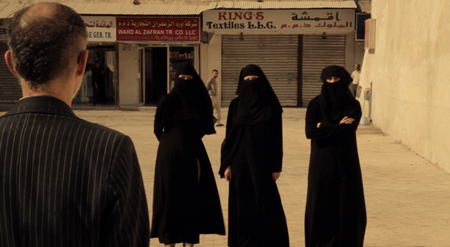 20. The Sheik and I (Caveh Zahedi) / The Ambassador (Mads Brügger) — Forget the Errol Morris-meets-crime show aesthetic and hermetically-sealed narrative of The Imposter and instead check out these fakers. Troublemaker Caveh Zahedi’s much-discussed The Sheik and I is every bit as morally prickly as you’ve heard in its take-no-prisoners and leave-none-unannoyed approach. The film is crazy entertaining, but I liked it most as a tale of two opposing religions: fundamentalist Islam and the Me-First/Art-For-Its-Own-Sake Church of New York City.
20. The Sheik and I (Caveh Zahedi) / The Ambassador (Mads Brügger) — Forget the Errol Morris-meets-crime show aesthetic and hermetically-sealed narrative of The Imposter and instead check out these fakers. Troublemaker Caveh Zahedi’s much-discussed The Sheik and I is every bit as morally prickly as you’ve heard in its take-no-prisoners and leave-none-unannoyed approach. The film is crazy entertaining, but I liked it most as a tale of two opposing religions: fundamentalist Islam and the Me-First/Art-For-Its-Own-Sake Church of New York City.
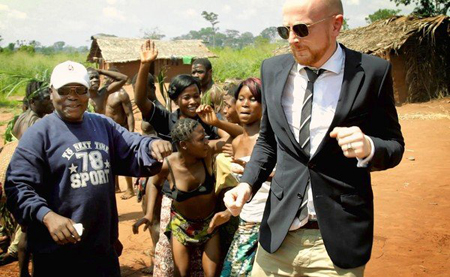 Then you have Mads Brügger’s dense and almost unbelievable follow-up to The Red Chapel, where the Danish filmmaker/journalist goes full gonzo in impersonating a European ambassador to Africa. The level of danger and corruption uncovered is as jaw-dropping as you’d expect. Though both films are flawed, the bravery it took to get them made should be praised wildly and the cheap digital tools used to capture their unmistakable images point to the future of stunt-performance movies to come.
Then you have Mads Brügger’s dense and almost unbelievable follow-up to The Red Chapel, where the Danish filmmaker/journalist goes full gonzo in impersonating a European ambassador to Africa. The level of danger and corruption uncovered is as jaw-dropping as you’d expect. Though both films are flawed, the bravery it took to get them made should be praised wildly and the cheap digital tools used to capture their unmistakable images point to the future of stunt-performance movies to come.
************************************************************************************************************************************************************************
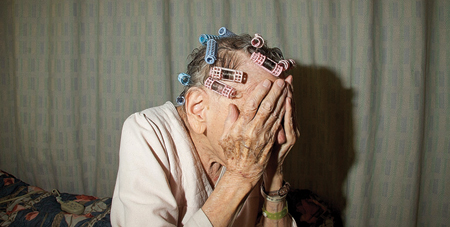 19. The Patron Saints (Brian M. Cassidy and Melanie Shatzky) — Foregoing all the niceties we normally associate with films about the elderly, The Patron Saints isn’t afraid to go bleak in its depiction of an unnamed nursing home. It’s a disturbing film to say the least, but in refusing to hide from the darkness, Cassidy and Shatzky achieve a hard-fought sweetness that wins the day. In its negative review of the film, The Hollywood Reporter writes, “the film exists in the agonizing present tense.” I can’t think of a better compliment than that.
19. The Patron Saints (Brian M. Cassidy and Melanie Shatzky) — Foregoing all the niceties we normally associate with films about the elderly, The Patron Saints isn’t afraid to go bleak in its depiction of an unnamed nursing home. It’s a disturbing film to say the least, but in refusing to hide from the darkness, Cassidy and Shatzky achieve a hard-fought sweetness that wins the day. In its negative review of the film, The Hollywood Reporter writes, “the film exists in the agonizing present tense.” I can’t think of a better compliment than that.
************************************************************************************************************************************************************************
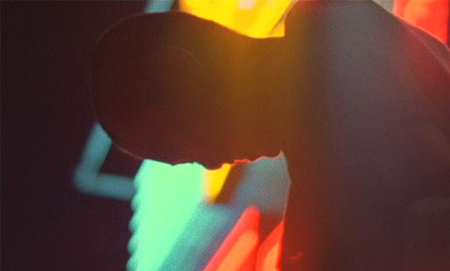 18. Kuichisan (Maiko Endo) — I had a small role in helping this curious whatsit get finished, my friend and collaborator Sean Price Williams photographed the picture, and I know Maiko very well, but this movie still feels like it fell from the sky fully formed. It’s a post-apocalyptic punk vision, shot as a 16mm documentary, about identity and youth and nationality in Okinawa, Japan. Just see it.
18. Kuichisan (Maiko Endo) — I had a small role in helping this curious whatsit get finished, my friend and collaborator Sean Price Williams photographed the picture, and I know Maiko very well, but this movie still feels like it fell from the sky fully formed. It’s a post-apocalyptic punk vision, shot as a 16mm documentary, about identity and youth and nationality in Okinawa, Japan. Just see it.
************************************************************************************************************************************************************************
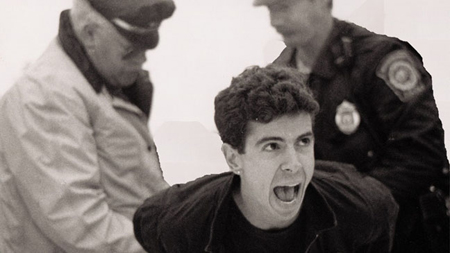 17. How To Survive A Plague (David France) — Essential viewing. The AIDS epidemic and the heroic response by the LGBT community is delivered as a present-tense struggle against political irrelevancy and death. Like a war film that makes the viewer feel the bullets whizzing overhead, How To Survive A Plague places you firmly in the present-tense confusion of this incomprehensible nightmare. France builds his structure with amazing archival material, but the way he uses talking heads to create something of a twist in the narrative is truly inventive. Powerful stuff.
17. How To Survive A Plague (David France) — Essential viewing. The AIDS epidemic and the heroic response by the LGBT community is delivered as a present-tense struggle against political irrelevancy and death. Like a war film that makes the viewer feel the bullets whizzing overhead, How To Survive A Plague places you firmly in the present-tense confusion of this incomprehensible nightmare. France builds his structure with amazing archival material, but the way he uses talking heads to create something of a twist in the narrative is truly inventive. Powerful stuff.
************************************************************************************************************************************************************************
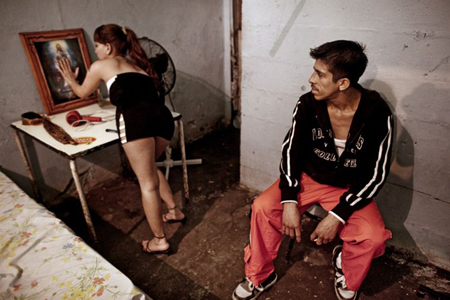 16. Whore’s Glory (Michael Glawogger) — A film that obliterates the wall between fiction and nonfiction with ease. Celebrated Austrian auteur Glawogger is concerned with how global, abstracted systems (work, living conditions, and in this case, the world’s “oldest profession”) affect and are affected by actual human beings. He’s an aesthete and a stylist, but he gives as much attention to the rhythms of real conversation as he does the mise en scène. This is a film about sex as a commodity, sex as a source of power/oppression, and how bodies and cultures interact.
16. Whore’s Glory (Michael Glawogger) — A film that obliterates the wall between fiction and nonfiction with ease. Celebrated Austrian auteur Glawogger is concerned with how global, abstracted systems (work, living conditions, and in this case, the world’s “oldest profession”) affect and are affected by actual human beings. He’s an aesthete and a stylist, but he gives as much attention to the rhythms of real conversation as he does the mise en scène. This is a film about sex as a commodity, sex as a source of power/oppression, and how bodies and cultures interact.
************************************************************************************************************************************************************************
 15. Me @ The Zoo (Chris Moukarbel and Valerie Veatch) — The rise and fall of internet hyper-celebrity Chris Crocker, known by everyone as the “Leave Britney Alone” guy, is more effective than most This is How We Live on the Internet Now movies because its primary concern is understanding Crocker, not in understanding everyone who watched his videos. With a visually quick-witted style and the same bare-everything-now aesthetic as its star, Me @ The Zoo arrives with energy and delivers a truly amazing tale.
15. Me @ The Zoo (Chris Moukarbel and Valerie Veatch) — The rise and fall of internet hyper-celebrity Chris Crocker, known by everyone as the “Leave Britney Alone” guy, is more effective than most This is How We Live on the Internet Now movies because its primary concern is understanding Crocker, not in understanding everyone who watched his videos. With a visually quick-witted style and the same bare-everything-now aesthetic as its star, Me @ The Zoo arrives with energy and delivers a truly amazing tale.
************************************************************************************************************************************************************************
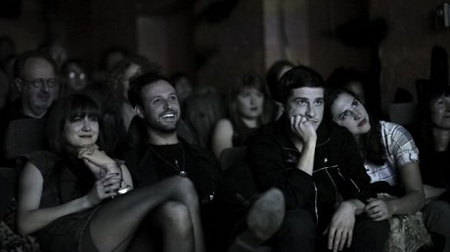 14. Open Five 2 (Kentucker Audley) — My pal Kentucker Audley appeared in another movie this year that could have made this list, Joe Swanberg’s meta-trick The Zone, which deserves praise for its sexy layering of fiction and nonfiction. But for his own work, Audley buries the meta and maximizes the intimacy to lovely effect. Playing himself along side his real-life girlfriend Caroline White, Audley recreates real events, lets chance have its say and builds towards a subtle, emotional climax that is completely rooted in lived-in observation. He would never call his work documentary, but there’s no difference to me.
14. Open Five 2 (Kentucker Audley) — My pal Kentucker Audley appeared in another movie this year that could have made this list, Joe Swanberg’s meta-trick The Zone, which deserves praise for its sexy layering of fiction and nonfiction. But for his own work, Audley buries the meta and maximizes the intimacy to lovely effect. Playing himself along side his real-life girlfriend Caroline White, Audley recreates real events, lets chance have its say and builds towards a subtle, emotional climax that is completely rooted in lived-in observation. He would never call his work documentary, but there’s no difference to me.
************************************************************************************************************************************************************************
 13. Family Nightmare (Dustin Guy Defa) / Grimes’ “Oblivion“ (Emily Kai Bock) — Two short, vital pieces that make the case for the expansion of nonfiction technique. Dustin Guy Defa’s masterful Family Nightmare gets my vote for scariest movie of the year by simply dubbing creepy voices over truly disturbing home videos to gut-wrenching effect.
13. Family Nightmare (Dustin Guy Defa) / Grimes’ “Oblivion“ (Emily Kai Bock) — Two short, vital pieces that make the case for the expansion of nonfiction technique. Dustin Guy Defa’s masterful Family Nightmare gets my vote for scariest movie of the year by simply dubbing creepy voices over truly disturbing home videos to gut-wrenching effect.
Meanwhile the video for Canadian pop star Grimes’ song “Oblivion” plays with documentary by having the singer interact with real situations in playful and surprising ways. The result is a doc/music video hybrid full of pathos and joy.
************************************************************************************************************************************************************************
 12. The Waiting Room (Peter Nicks) — A deeply political film, mixing a Wiseman-like focus on the nuance of institutions with a powerful humanism to deliver a portrait of an Oakland hospital. The film wants to tell stories, wants to observe the damage wrought by a flawed health care/economic system and succeeds with a rough hand-made quality that adds to the immediacy of the emotional portraits. Necessary viewing.
12. The Waiting Room (Peter Nicks) — A deeply political film, mixing a Wiseman-like focus on the nuance of institutions with a powerful humanism to deliver a portrait of an Oakland hospital. The film wants to tell stories, wants to observe the damage wrought by a flawed health care/economic system and succeeds with a rough hand-made quality that adds to the immediacy of the emotional portraits. Necessary viewing.
************************************************************************************************************************************************************************
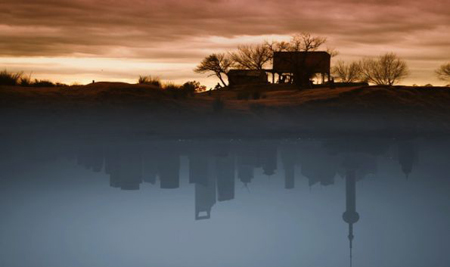 11. ¡Vivan Las Antipodas! (Victor Kossakovsky) — This tricky, mysterious study of antipodes—places on Earth located diametrically opposite to each other—by Russian master Victor Kossakovsky (who was virtually unknown in this country until True/False gave him their 2012 “True Vision Award”) is a cinematic carnival ride of visual ideas and wonder, but it is equally adept at bringing to life the people and places its gliding camera rests on.
11. ¡Vivan Las Antipodas! (Victor Kossakovsky) — This tricky, mysterious study of antipodes—places on Earth located diametrically opposite to each other—by Russian master Victor Kossakovsky (who was virtually unknown in this country until True/False gave him their 2012 “True Vision Award”) is a cinematic carnival ride of visual ideas and wonder, but it is equally adept at bringing to life the people and places its gliding camera rests on.
************************************************************************************************************************************************************************
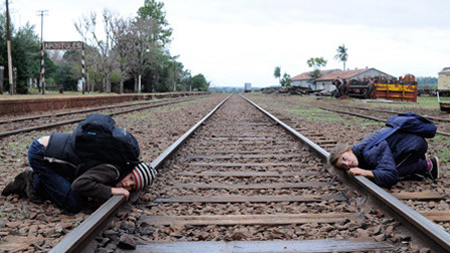 10. Argentinian Lesson (Wojciech Staron) — Swoon alert. Alive at every moment, this film is at once out-of-time and happening-as-you-watch. Starring the Polish filmmaker’s own seven-year-old son Janek as he adjusts to a new place in a foreign land, Argentinian Lesson is full of tiny, perfectly-rendered observations and an undeniable poetry that turns daily routines and practical life-lessons into cinematic bliss.
10. Argentinian Lesson (Wojciech Staron) — Swoon alert. Alive at every moment, this film is at once out-of-time and happening-as-you-watch. Starring the Polish filmmaker’s own seven-year-old son Janek as he adjusts to a new place in a foreign land, Argentinian Lesson is full of tiny, perfectly-rendered observations and an undeniable poetry that turns daily routines and practical life-lessons into cinematic bliss.
************************************************************************************************************************************************************************
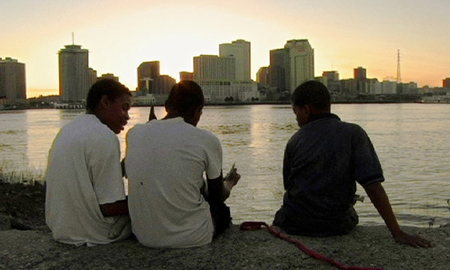 9. Tchoupitoulas (Bill and Turner Ross) — Criticized in some corners for compressing nine months of shooting into one glorious New Orleans night, Tchoupitoulas should instead be lauded for draping itself in its dreamy cinematic artifice and wearing its construction as a movie proudly. More importantly, though, (full disclosure: my friends) the Ross brothers have quickly become our most reliable documenters of place. Each new film of theirs moving forward should be treated as an event.
9. Tchoupitoulas (Bill and Turner Ross) — Criticized in some corners for compressing nine months of shooting into one glorious New Orleans night, Tchoupitoulas should instead be lauded for draping itself in its dreamy cinematic artifice and wearing its construction as a movie proudly. More importantly, though, (full disclosure: my friends) the Ross brothers have quickly become our most reliable documenters of place. Each new film of theirs moving forward should be treated as an event.
************************************************************************************************************************************************************************
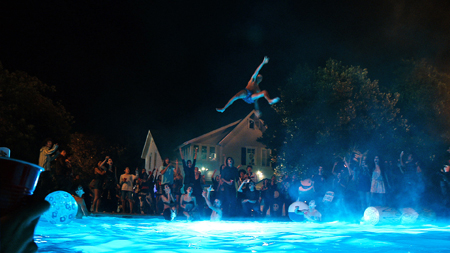 8. Project X (Nima Nourizadeh) — This polarizing piece of high trash is just one of the fiction films that play with a documentary aesthetic (the devotion to the iPhone premise in King Kelly and the thrilling flight scene in Chronicle were also pretty great), but no other movie bent the rules so gleefully. Obviously fictional and silly, Project X was still apparently made like a documentary—that’s a real party and those are real cameras capturing legit mayhem. Nerd teen sex fantasies are nothing new, but by going immersive and using nonfiction techniques, with actors “playing” themselves, Project X goes beyond lusty hedonism as it devolves, by the end, into something close to a pure rush of nihilism.
8. Project X (Nima Nourizadeh) — This polarizing piece of high trash is just one of the fiction films that play with a documentary aesthetic (the devotion to the iPhone premise in King Kelly and the thrilling flight scene in Chronicle were also pretty great), but no other movie bent the rules so gleefully. Obviously fictional and silly, Project X was still apparently made like a documentary—that’s a real party and those are real cameras capturing legit mayhem. Nerd teen sex fantasies are nothing new, but by going immersive and using nonfiction techniques, with actors “playing” themselves, Project X goes beyond lusty hedonism as it devolves, by the end, into something close to a pure rush of nihilism.
************************************************************************************************************************************************************************
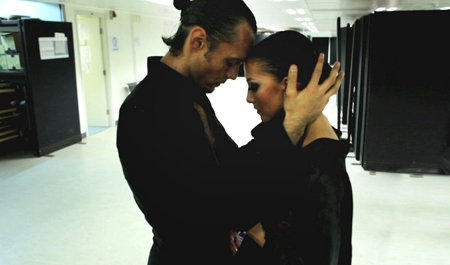 7. Ballroom Dancer (Christian Bonke and Andreas Koefoed) — From the exciting Danish documentary movement comes this emotionally gripping verité portrait of former World Latin Dance Champion Slavik Kryklyvyy and his girlfriend and partner, Anna Melnikova. A story of artistic and athletic obsession becomes a tale of love lost, with each melodramatic note balanced by an attentive camera and a potent editorial restraint.
7. Ballroom Dancer (Christian Bonke and Andreas Koefoed) — From the exciting Danish documentary movement comes this emotionally gripping verité portrait of former World Latin Dance Champion Slavik Kryklyvyy and his girlfriend and partner, Anna Melnikova. A story of artistic and athletic obsession becomes a tale of love lost, with each melodramatic note balanced by an attentive camera and a potent editorial restraint.
************************************************************************************************************************************************************************
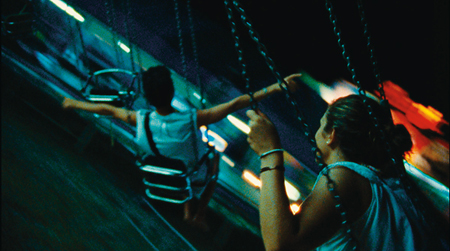 6. Summer of Giacomo (Alessandro Comodin) — A film so pure in its portrayal of youth and love, so immediate in its capturing of light and bodies, that it effortlessly wiggles free of any documentary vs. fiction constraints.
6. Summer of Giacomo (Alessandro Comodin) — A film so pure in its portrayal of youth and love, so immediate in its capturing of light and bodies, that it effortlessly wiggles free of any documentary vs. fiction constraints.
************************************************************************************************************************************************************************
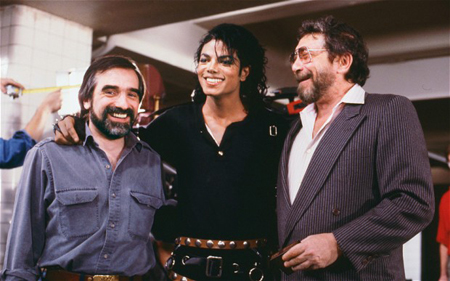 5. Bad 25 (Spike Lee) — Finally we have the definitive Michael Jackson film. In his particular pop-doc style, Spike Lee gets at the cultural icon’s vast influence by going narrow and focusing on the wildly popular (though often derided) Bad album. From this song-to-song hyper-focus a stunning portrait emerges of an African-American artist at his highest peak. “Man in the Mirror” as the finale is masterfully devastating.
5. Bad 25 (Spike Lee) — Finally we have the definitive Michael Jackson film. In his particular pop-doc style, Spike Lee gets at the cultural icon’s vast influence by going narrow and focusing on the wildly popular (though often derided) Bad album. From this song-to-song hyper-focus a stunning portrait emerges of an African-American artist at his highest peak. “Man in the Mirror” as the finale is masterfully devastating.
************************************************************************************************************************************************************************
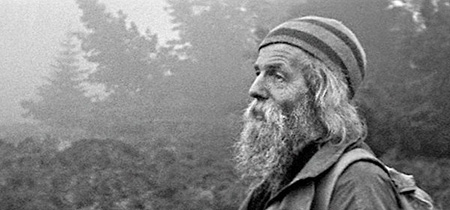 4. Two Years At Sea (Ben Rivers) — A film full of magic, where light leaks merge with the environment at the surface of the image. Genre-defying at its core, Two Years At Sea is about myths and loss and growing old and movies, where experience and process converge and one man’s experience is rendered universal.
4. Two Years At Sea (Ben Rivers) — A film full of magic, where light leaks merge with the environment at the surface of the image. Genre-defying at its core, Two Years At Sea is about myths and loss and growing old and movies, where experience and process converge and one man’s experience is rendered universal.
************************************************************************************************************************************************************************
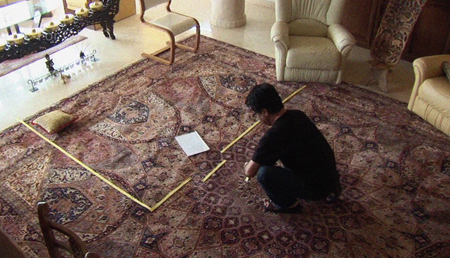 3. This Is Not A Film (Jafar Panahi and Mojtaba Mirtahmasb) — This stunning film is not only the next logical step in Iranian meta-cinema, but a brave act of political defiance. As a documentary, being labeled “not a film” is not simply a legal maneuver but a freeing act of expression, bringing the weight of the present tense to the forefront and creating an almost unprecedented immediacy. The last scene of the movie, a random trip down an elevator with a trash collector that leads to a shocking history-as-it-happens moment, is maybe the best 10 minutes of pure cinema this year.
3. This Is Not A Film (Jafar Panahi and Mojtaba Mirtahmasb) — This stunning film is not only the next logical step in Iranian meta-cinema, but a brave act of political defiance. As a documentary, being labeled “not a film” is not simply a legal maneuver but a freeing act of expression, bringing the weight of the present tense to the forefront and creating an almost unprecedented immediacy. The last scene of the movie, a random trip down an elevator with a trash collector that leads to a shocking history-as-it-happens moment, is maybe the best 10 minutes of pure cinema this year.
************************************************************************************************************************************************************************
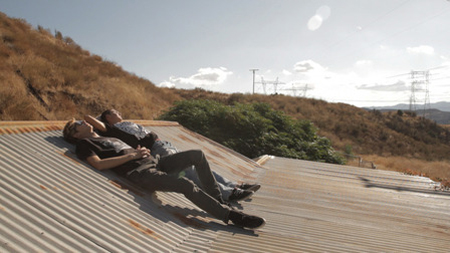 2. Only The Young (Elizabeth Mims and Jason Tippet) — A nearly perfect film about youth. Only The Young is a subtle and beguiling portrait of three Southern California teenagers that unfolds with such ease that one might not immediately recognize how exact every frame is or how perfectly calibrated is each moment. The film’s unhurried, non-judgmental style is an antidote to the desperate need-to-entertain-and-explain compulsion that you find in most documentaries based around interviews. There have been some great films made about the lives of teenagers and Only The Young has claimed its spot as one of the best.
2. Only The Young (Elizabeth Mims and Jason Tippet) — A nearly perfect film about youth. Only The Young is a subtle and beguiling portrait of three Southern California teenagers that unfolds with such ease that one might not immediately recognize how exact every frame is or how perfectly calibrated is each moment. The film’s unhurried, non-judgmental style is an antidote to the desperate need-to-entertain-and-explain compulsion that you find in most documentaries based around interviews. There have been some great films made about the lives of teenagers and Only The Young has claimed its spot as one of the best.
************************************************************************************************************************************************************************
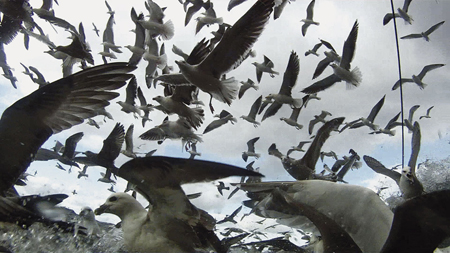 1. Leviathan (Véréna Paravel and Lucien Castaing-Taylor) — From the near-revolutionary Sensory Ethnography Lab at Harvard comes one of the most important documentaries ever made. By pushing their immersive verité portrait of a Maine fishing boat and its crew past the point of observation and into pure abstraction, co-directors Castaing-Taylor and Paravel have created a new type of experiential cinema and have drawn the map to the future. There is no going back after a masterwork like Leviathan. The game has changed.
1. Leviathan (Véréna Paravel and Lucien Castaing-Taylor) — From the near-revolutionary Sensory Ethnography Lab at Harvard comes one of the most important documentaries ever made. By pushing their immersive verité portrait of a Maine fishing boat and its crew past the point of observation and into pure abstraction, co-directors Castaing-Taylor and Paravel have created a new type of experiential cinema and have drawn the map to the future. There is no going back after a masterwork like Leviathan. The game has changed.
************************************************************************************************************************************************************************
Near Misses (in alphabetical order)
Canicula
Girl Walk // All Day
Low & Clear
Off Label
************************************************************************************************************************************************************************
Did Not See But Could Likely Have Made The List (in alphabetical order)
5 Broken Cameras
Beauty is Embarrassing
The Clock
Into The Abyss
Kumare
The Law In These Parts
An Oversimplification of Her Beauty
Reconversão
Room 237
Shut Up And Play The Hits
Stories We Tell
The Vanishing Spring Light
************************************************************************************************************************************************************************
Not On The List For A Reason (in alphabetical order)
Bully
The Imposter
The Invisible War
Jiro Dreams of Sushi
Searching For Sugar Man
************************************************************************************************************************************************************************
— Robert Greene









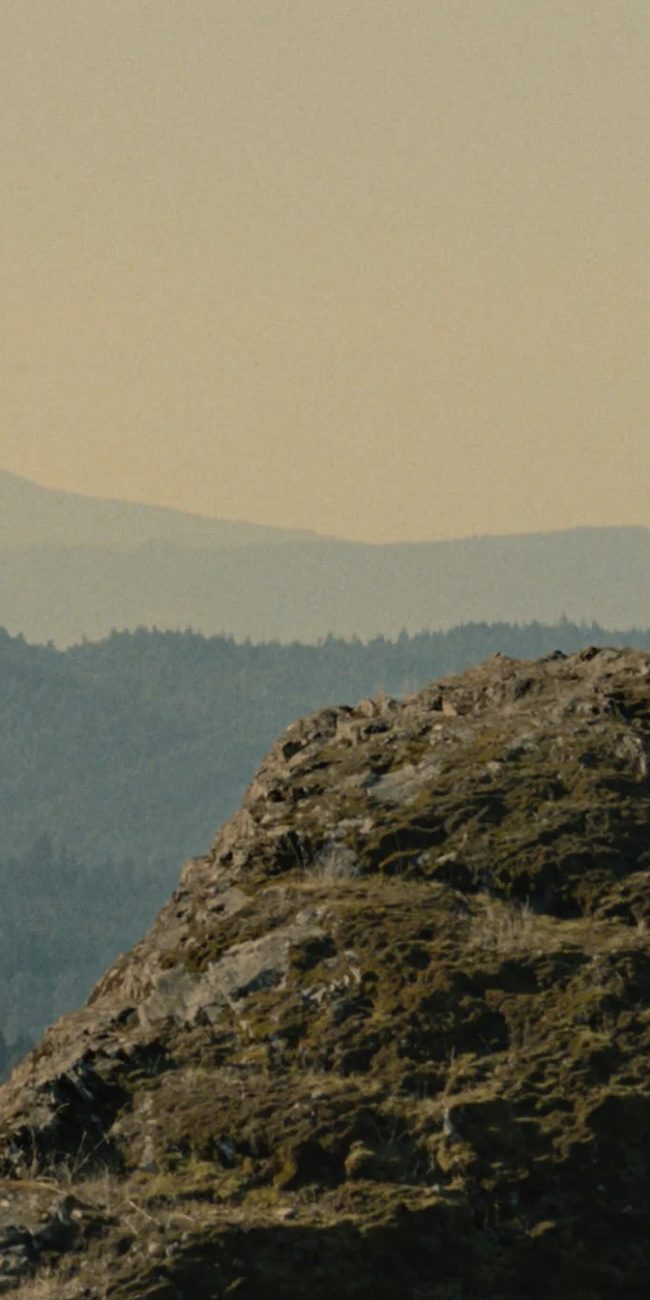


daniel mcguire
“The Act of Killing”? Better see it and do a quick re-write.
Robert Greene
Next year!
Derek Knowles
Why was Jiro Dreams of Sushi left off?
Tom Brooms
I also would be curious what reasons why some films were left off for a reason. You can’t call for a revolution without explaining what’s wrong with some of the years best received films. As is it reads like that close to the LA Times piece on ONLY THE YOUNG, which you openly railed.
Tom Brooms
Whoops, that first sentence is a doozy – I’m curious to hear your reasoning on omitting some films.
Robert Greene
Honestly I’d prefer not to say, except that I’m less interested in those films formally and I think they’ve all been overpraised.
Robert Greene
Honestly I’d prefer not to say, except that I’m less interested in those films formally and I think they’ve all been overpraised.
Jeff Deutchman
Leviathan is technically next year too. I thought release dates don’t matter. In any case, I second the case for Act of Killing. But otherwise, nice choices and good piece.
Tully
Not to speak for Mr. Greene here but maybe he hasn’t seen The Act of Killing yet, which means it will be considered in 2013 for that reason and not because of a release date situation? (Okay, I’ll back my butt back out of here now.)
Robert Greene
That’s exactly right. This was basically what I saw in 2012, which is a limited scope, I know. I actually inquired about seeing ACT OF KILLING, but I think it will be a big release this year. I can’t wait for it, it’s my number one most anticipated new film.